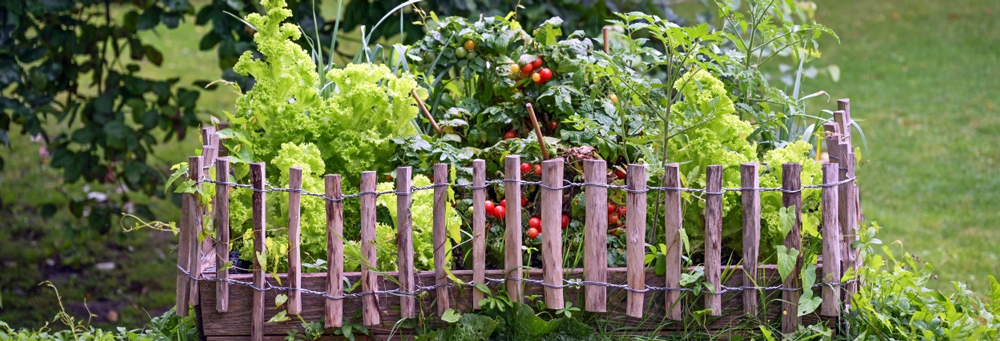After planning your garden with the perfect mix of tomatoes, peppers, and squash, you might worry about vegetables "crossing." Will your Brandywine tomatoes turn into Cherry tomatoes? Will your zucchini morph into pumpkins? Let’s separate fact from fiction and explore what really happens, especially in smaller gardens.
For This Year's Harvest
Most vegetables won’t show crossing effects in the current growing season, but there are a few exceptions to consider:
- Squash Family Members: Zucchini, pumpkins, and other same-species squash can cross-pollinate, occasionally leading to fruit with mixed traits. This is more likely in small gardens or near other gardens with similar plants.
- Sweet Corn: Sweet corn varieties can cross-pollinate with each other, resulting in kernels that are starchier, tougher, or less sweet. Cross-pollination is a significant concern for those growing different sweet corn varieties for food.
For other crops, the vegetables you harvest this season will remain true to type, even if some cross-pollination occurs.
For Space Planning (Food Production)
When growing vegetables for food production, squash and corn require special attention to avoid undesirable effects caused by cross-pollination. Here’s how to manage them, along with general tips for maximizing your garden’s productivity:
Squash: If different same-species varieties (e.g., zucchini and pumpkins) cross-pollinate, it can result in fruit with unexpected textures or flavors.
- Solution: Limit your garden to one variety per species. If growing multiple varieties, hand-pollination or planting them at opposite ends of the garden can help reduce crossing.
Corn: Sweet corn varieties that cross-pollinate can produce kernels that differ in texture and sweetness.
- Solution: Plant only one variety of sweet corn at a time or stagger planting dates by 14 days to prevent simultaneous tasseling. Dense barrier crops like sunflowers can also help minimize crossing in small gardens.
Combine Varieties: For crops other than squash and corn, growing multiple varieties side by side won’t affect the fruit. For example, different tomato or pepper varieties can be planted together without issue.
Optimize Sunlight: Ensure your plants get the necessary light. Tomatoes, peppers, and squash thrive in full sun, while corn requires plenty of direct light as well.
Space Efficiently: Use vertical gardening techniques for vining crops like tomatoes and squash to save space and boost production.
Group by Water Needs: Plant crops with similar watering requirements together to simplify irrigation and improve growth.
Focus on Soil Health: Use compost or organic matter to enrich the soil, ensuring a robust harvest.
By prioritizing squash and corn alongside general garden needs, you can produce a high-quality harvest while managing potential cross-pollination issues in small spaces.
For Seed Saving
If you plan to save seeds for next year, cross-pollination is a critical concern—especially in small gardens. Here’s what you need to know:
Tomatoes
- Crossing Likelihood: Tomatoes are mostly self-pollinating, with a low 2% chance of crossing, typically by bumblebees.
- Isolation Distance:
- Standard: 10–50 feet for general purity.
- Maximum Purity: Up to 300 feet in areas with high pollinator activity.
- Small Garden Tip: Use mesh bags over flowers to prevent crossing, especially if growing multiple varieties close together.
Peppers
- Crossing Likelihood: Peppers are insect-pollinated, making them prone to cross-pollination.
- Isolation Distance:
- Standard: 300 feet.
- Maximum Purity: 1/4 mile or more.
- Small Garden Tips:
- Use mesh bags over flowers intended for seed saving to isolate them from pollinators.
- Hand-pollinate flowers under mesh bags to ensure fruit set while maintaining seed purity.
- If not saving seeds, focus on spacing plants as far apart as possible and grow fewer varieties to reduce crossing risks.
Corn
- Crossing Likelihood: Corn is wind-pollinated and crosses easily, even between sweet corn varieties.
- Isolation Distance:
- Standard: At least 250–700 feet for moderate purity.
- Maximum Purity: Up to 1 mile.
- Small Garden Tips:
- Plant only one variety at a time, stagger planting dates by 14 days, or plant a dense barrier crop like sunflowers to minimize cross-pollination.
Squash
- Crossing Likelihood: Squash varieties of the same species cross easily through insect activity.
- Isolation Distance:
- Standard: At least 1/4 mile (1,320 feet) between same-species varieties.
- Small Gardens: 50–100 feet can reduce crossing risks.
Other Small Garden Tips for Squash:
- Hand-pollinate flowers and cover them with mesh bags to control pollination.
- Stagger planting dates to prevent overlapping flowering periods.
- Use tall barrier plants like corn or sunflowers between varieties.
- Limit your garden to one variety per species to avoid crossing altogether.
The Takeaway
Understanding cross-pollination helps you design your garden confidently and plan effectively for both harvesting and seed-saving, even in small spaces. Techniques like hand-pollination, mesh bags, planting barriers, and staggering bloom times allow you to manage cross-pollination while focusing on your goals—whether growing vegetables or preserving pure seed varieties.

































































































































































































































































































































































































































































































































































































































































